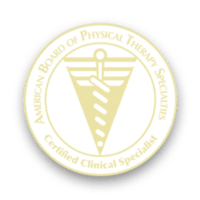Oxygen is critical for tissues of the body to function properly and it is the energy source that is required for tissues to heal. Compared with other organs, brain tissue is the most vulnerable to hypoxia (low levels of oxygen) with low antioxidant defenses.
What is hyperbaric oxygen therapy?
Hyperbaric oxygen therapy is a pressurized tube or room that administers 100% oxygen, three times that which we breath under normal conditions. This allows more oxygen to cross the blood brain barrier (BBB) and is the energy that promotes the healing process. The research on the effectiveness of HBOT for stroke recovery is inconsistent, however, promising.
How does HBOT help to promote positive brain changes after a stroke?
The primary benefit of HBOT is the increase in the oxygen that is available to the tissues in the brain. Some literature suggests HBOT increases arterial oxygen tension (amount of oxygen in the blood) and brain oxygen tension. Elevated levels of oxygen supply the energy needs for the brain repair process1(if administered during the regenerative stage).
Does hyperbaric oxygen therapy help to improve walking?
At this point, there is not a clear answer to this question and is still widely debated among healthcare professionals.
The US department of health and human sciences performed a review of the research on HBOT and concluded that HBOT for stroke does not show strong evidence. In their review, they state that there are two studies that DID show a significant improvement in function however, they are rated as poor quality.
That being said, the many benefits of elevated oxygen levels leads me to believe, this report ONLY means that further research is needed. It is clear that oxygen is the required energy that promotes healing in the body. Elevated oxygen reduces oxidative stress, decreases inflammation, and stimulates the release of growth factors. Some literature shows clinically significant improvement in walking, memory, cognition (thinking), and multitasking.
One research study by Efrati et al. has a thought provoking rationale for the inconsistencies in the current research. They suggest that the research that shows inconsistent results is due to the timing of the treatment. If it is administered to soon after a stroke, this may have adverse effects. After a stroke when the brain is deprived of oxygen, there are some natural metabolic and chemical changes that occur that are attempting to restore blood flow to deprived tissues (revascularize) effected regions of the brain. When oxygen levels are elevated during this early phase, it may impede this process.
What is one of the most well documented and proven treatments to improve function after a stroke?
Unfortunately, there is no magic pill that is going to instantly give someone their life back after a stroke. To create positive brain changes and improve function takes practice, and repetition. You can read more about neuroplasticity to gain a full understanding of this. A neurologic physical therapist is specially trained in manual techniques, visual scanning strategies, block practice, partial practice, grading activities, and feedback schedules that are ALL proven interventions that promote motor recovery.
Final Comments to Stroke Survivors
Depending on the severity of the stroke, recovery may take several years. I can only imagine how difficult a task this must be for anyone in YOUR shoes. But DON’T GIVE UP! Stick with your therapist, and your recovery program. You may have setbacks, plateaus, and times when you just feel like you can’t go on. But ALWAYS remember the great accomplishments you have made to get to this point. Keep a list of the things you CAN do. Set small realistic goals to help you get through the day. You have more control than you think you have. Your mind, thoughts, and what you CHOOSE to focus on is in your control. You CAN do this. YOU have what it takes. Choose to set your mind right every day and your recovery holds no limitations!
Call Today and Speak to a Specialist
407-900-0841
Contact Us Today!

Board Certified Neurologic Specialists
Don’t settle for general therapists and treatments by less qualified techs and assistants. 100% of our staff are board certified neurologic Doctors of Physical Therapy






